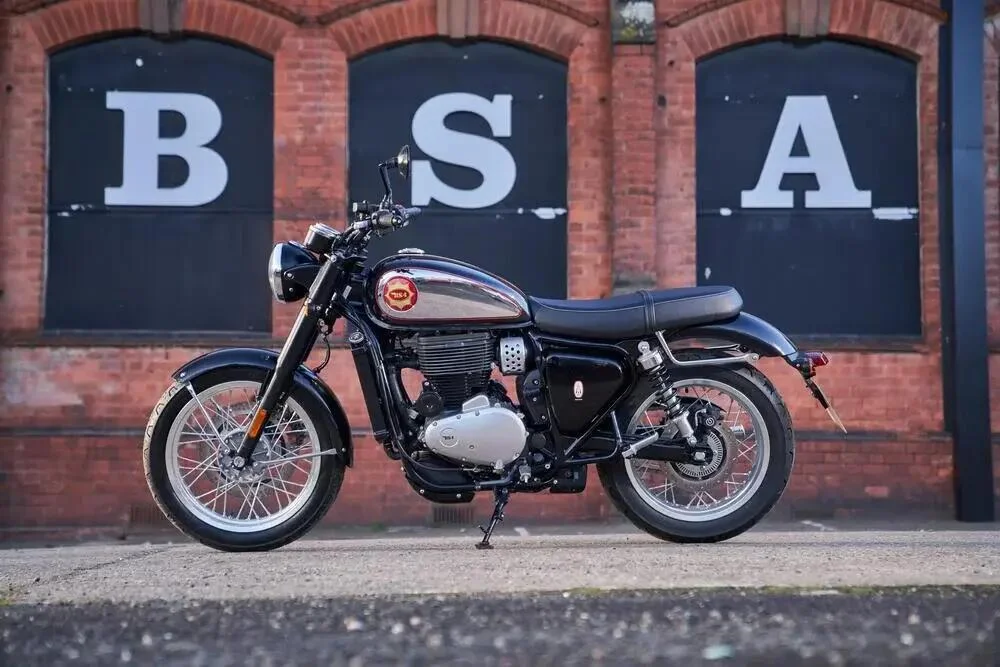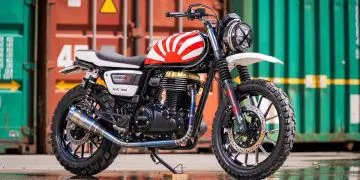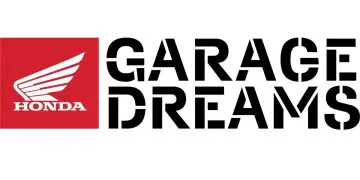It is an established fact: small/medium displacements also have their own market in Europe, where for years dealership customers have defended the concept of “bigger is better,” sometimes with inconsistent results. Not to mention, in fact, the first 1000 or 1100 cc sport motorcycles from the 80s, which, in addition to their incredible power (for the time), were associated with weights and dimensions unsuitable for sport riding, which made them ridiculed in corners by much smaller motorcycles in terms of displacement and performance?
But apart from this example, the question is that the gap opened almost 10 years ago by Royal Enfield is attracting other manufacturers: simple motorcycles, easy to ride, with a focus on “quality/price ratio,” but aesthetically pleasing thanks to their own personality and design consistency.
The Indian manufacturer has always stated that, in the segment of small/medium displacement motorcycles with attractive prices, there was much to be done in Europe and room for expansion. And it was right: not only is Royal Enfield now a (re)established brand in the Old Continent, but it has paved the way for other manufacturers who have already introduced their 300/400 cc motorcycles in Europe, or are about to do so. In India, to cite just one significant fact, there is a battle to the death to conquer the market for motorcycles of around 350 cc, where the best-selling model is currently the Royal Enfield Classic 350 (in November 2023, more than 31,000 units had been delivered in India alone! Who knows if one of the rival manufacturers of the company based in Chennai could be about to land in our country and somehow repeat Royal Enfield’s virtuous path.

Since Indian manufacturers have more than adequate motorcycles, even for global distribution, which of those currently competing for supremacy in the country have – in our opinion – good chances of reaching Europe? And what do we care about Indian manufacturers that we know little or nothing about? Put that way, it’s a question that deserves some hypothetical answers.
The Indian market is a place where some of the strongest players in the world confront each other. For example, Hero will be the second largest volume manufacturer in 2023 (the first being Honda) and TVS, Bajaj, and Classic Legends group also have significant volumes on their side. Given that many of the things we see in Asia have a significant reverberation here, when conditions in the so-called “mature” markets allow it, we would not be very surprised if by 2025 or shortly thereafter, some of these brands landed in Europe to give a new boost to the 300/400 cc motorcycle segment and perhaps significantly change the balance of sales volumes.

TVS: a giant that has a partnership with BMW for the production of the G 310 family in India and, furthermore, the G 310 RR is very close to being a best-seller for TVS, like the Apache RR. The partnership with Munich doesn’t end here, it also continues with electric vehicles. TVS has acquired Norton, the historic and renowned British brand. Let’s keep that in mind.
Bajaj: another giant (the fourth largest manufacturer in the world in 2023) that has an ongoing partnership with a European manufacturer, or rather, two; in this case, Triumph, for which it builds the 400 cc Scrambler 400 X and Speed 400 family (it seems that other motorcycles are planned on the same platform) and KTM, to which it is connected through shareholdings, in addition to having Bajaj build small displacement KTM and Husqvarna motorcycles, 5 million motorcycles to date, and this number will increase with future electric models.

Jawa: yes, the Czech brand has split in two. On one hand, we have Jawa operating in the Czech Republic, and on the other hand, Classic Legends (Mahindra) has acquired the rights to the brand for the Indian region, producing a range of classic-style single-cylinder motorcycles of 300 or 350 cc, including the Pèrak. “Why?” you may ask, until you discover that Jawa was a very popular brand in India in the past. Furthermore, if we look at the list of Jawa based in the Czech Republic, we will also find some models manufactured in India.
Yezdi: I bet few of you remember this name, which is not surprising. It is a historic brand in India, where it took over the legacy of Jawa, then disappeared and later resurrected by Classic Legends to exploit the brand’s appeal and its dominance in the market. In summary, there is a list of three models (Scrambler, Adventure, and Roadster) based on the Jawa Pèrak engine and big development plans.

Hero: not with Europe, but with America. The marriage between Hero and Harley-Davidson has already produced the Harley-Davidson X440, a roadster currently only sold in India. But a few days ago, the Hero Mavrick 440 was presented, practically on the same platform as the X440. If we add to this the fact that Hero does not hide its intention to establish itself in Europe and that Harley will not bring the X440 here (at least, there is no news about it so far)… we can expect to see the Mavrick in the West sooner or later.
What is certain is that TVS has announced an agreement to import and distribute its vehicles in Europe through the Swiss group Emil Frey, Jawa (as already seen) is already halfway there, Hero has more than concrete intentions made clear at EICMA 2023, and BSA is awaiting more intensive distribution beyond the United Kingdom. What is missing? Bajaj, which if it wanted to, would certainly have models for the European market, and Yezdi, which honestly does not seem to be a recognizable brand in the West, but could supply its motorcycles (think of a small 300 cc adventure) to Jawa.
In summary, the Indian invasion, after the Chinese one, has already begun, although with assumptions and methods very different from those that brought us CFMOTO, QJ, VOGE, and all the other Chinese brands that are gaining increasingly significant market share, also through the ownership of Italian brands. In fact, it will be – and already is – very interesting to observe how the common ground of competitive prices will be approached and managed between Indians and Chinese, in a scenario that is still largely unwritten.







